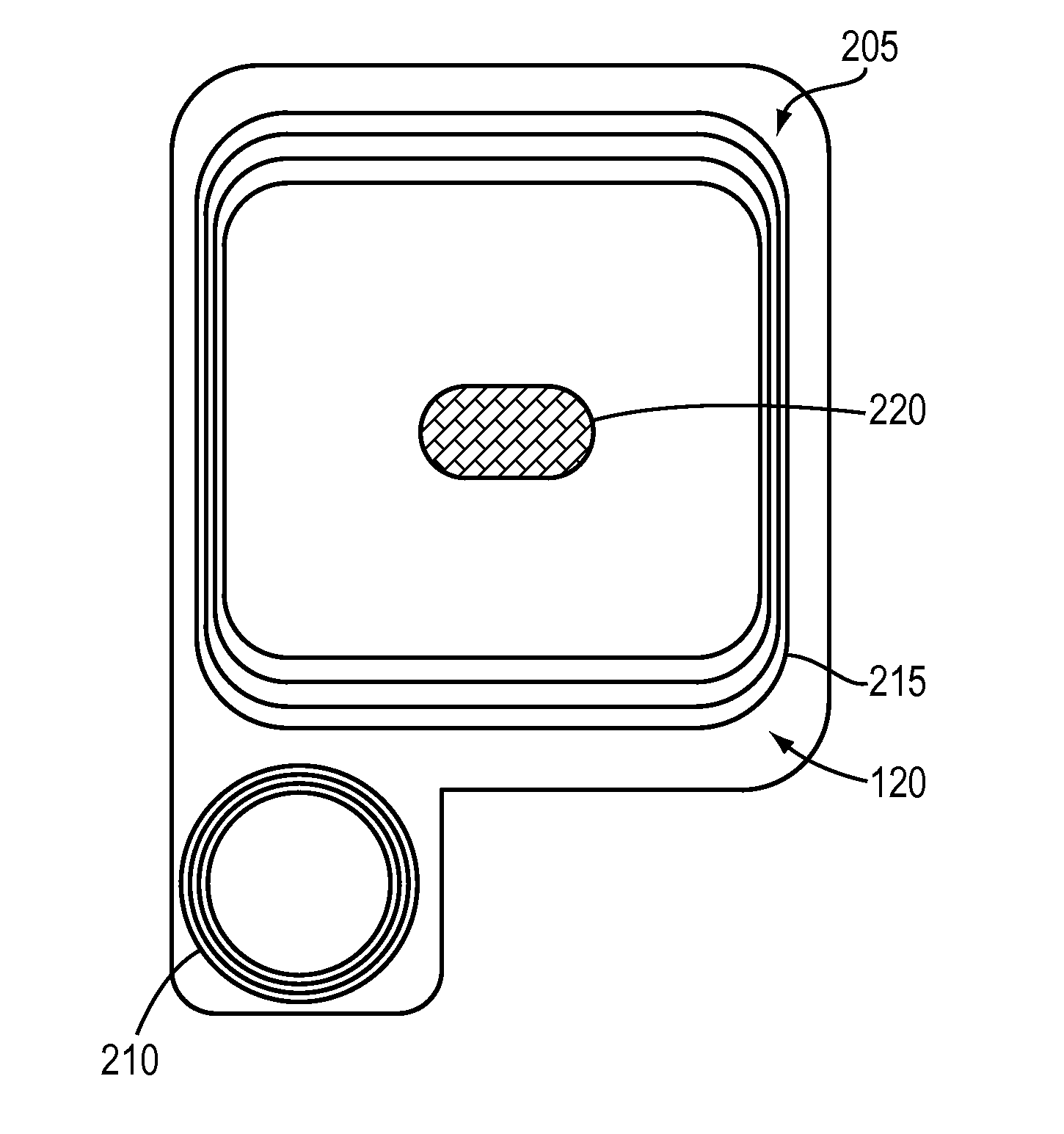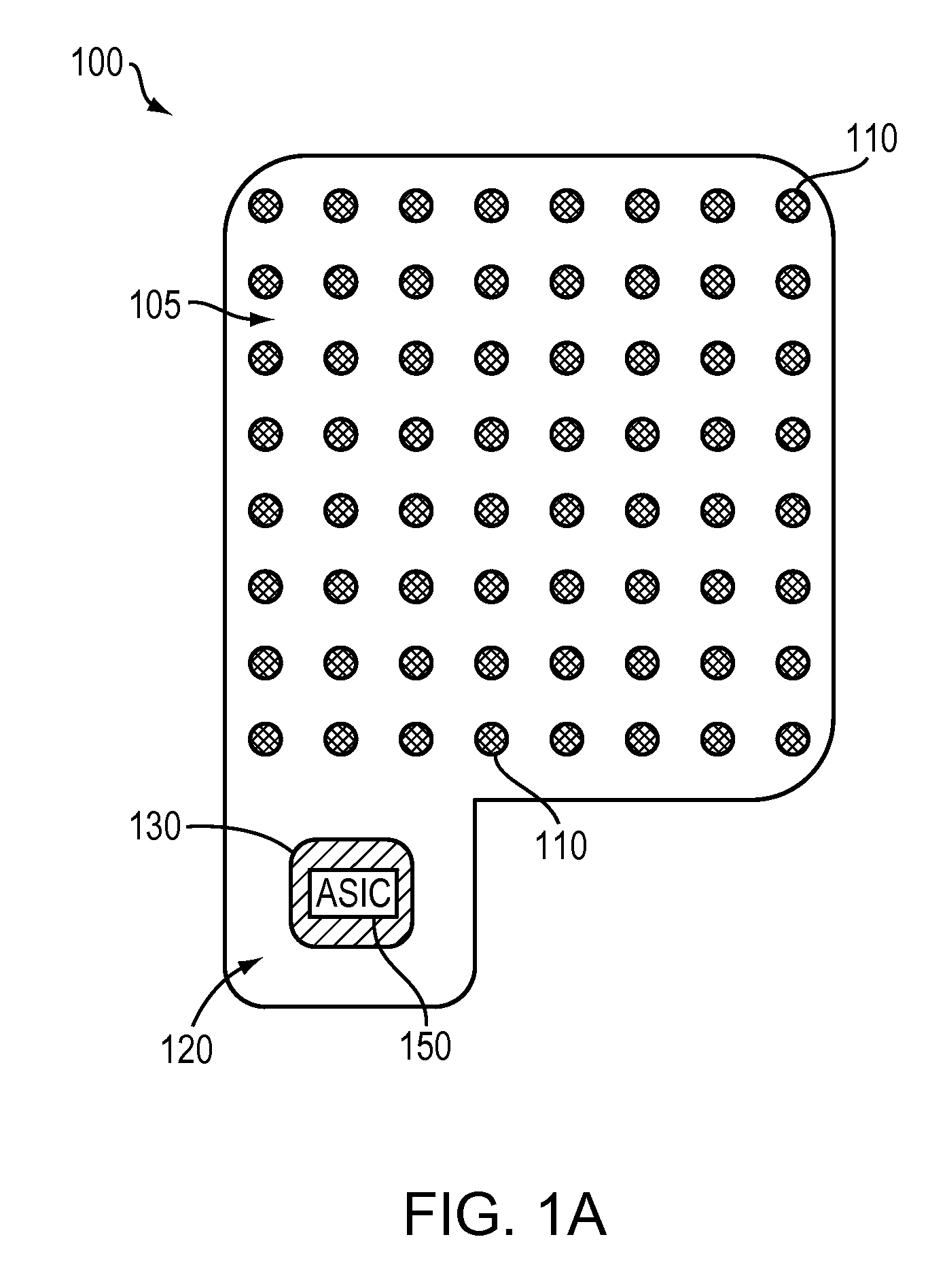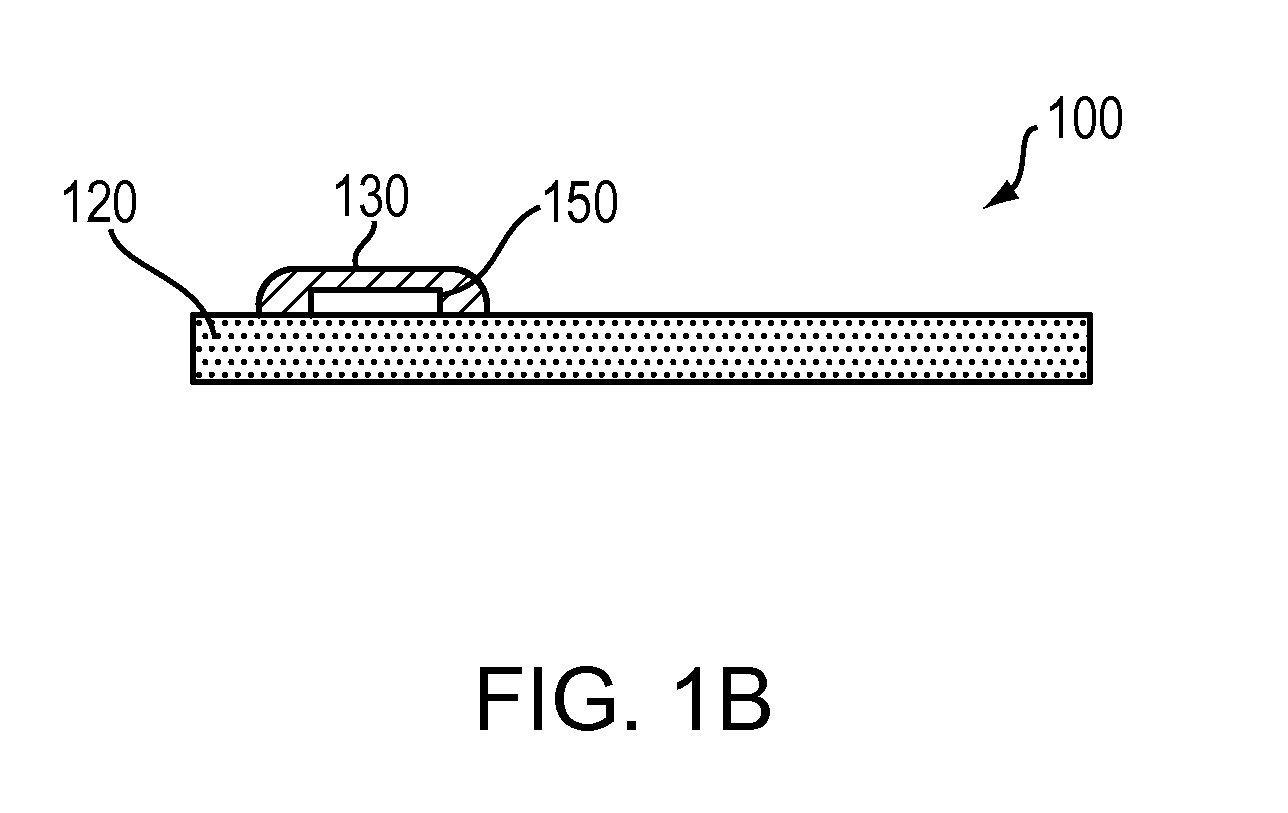Wireless recording and stimulation of brain activity
a brain activity and wireless technology, applied in the field of wireless brain activity recording devices and methods, can solve the problems of increasing the likelihood of serious infection, long hospital stay, and difficulty in coping with patients, so as to reduce morbidity or mortality, avoid long and costly hospitalization, and eliminate the risk of dislodging the implanted array
- Summary
- Abstract
- Description
- Claims
- Application Information
AI Technical Summary
Benefits of technology
Problems solved by technology
Method used
Image
Examples
Embodiment Construction
[0026]As used herein, the term “dura” refers to the fibrous membrane covering the brain and lining the inner surface of the skull; “electrocorticogram” (ECoG) refers to measurement of electrical brain activity from electrodes placed with the cranium and in close proximity to the cerebral cortex; “resection” means surgical removal of a part of the brain responsible for initiating or propagating seizure activity (and for purposes hereof, subpial transections are considered within the definition of resection); “subdural” refers to the volume within the cranium below the dura mater but above the arachnoid membrane of the meninges; “epileptogenic foci” refer to locations of epileptic abnormalities with the brain; and an “ASIC” means an application-specific integrated circuit, i.e., an electrical circuit device fabricated usually in silicon and designed for a specific application, or a general-purpose processor. The ASIC may be implemented in conjunction with, as appropriate, support circ...
PUM
 Login to View More
Login to View More Abstract
Description
Claims
Application Information
 Login to View More
Login to View More - R&D
- Intellectual Property
- Life Sciences
- Materials
- Tech Scout
- Unparalleled Data Quality
- Higher Quality Content
- 60% Fewer Hallucinations
Browse by: Latest US Patents, China's latest patents, Technical Efficacy Thesaurus, Application Domain, Technology Topic, Popular Technical Reports.
© 2025 PatSnap. All rights reserved.Legal|Privacy policy|Modern Slavery Act Transparency Statement|Sitemap|About US| Contact US: help@patsnap.com



